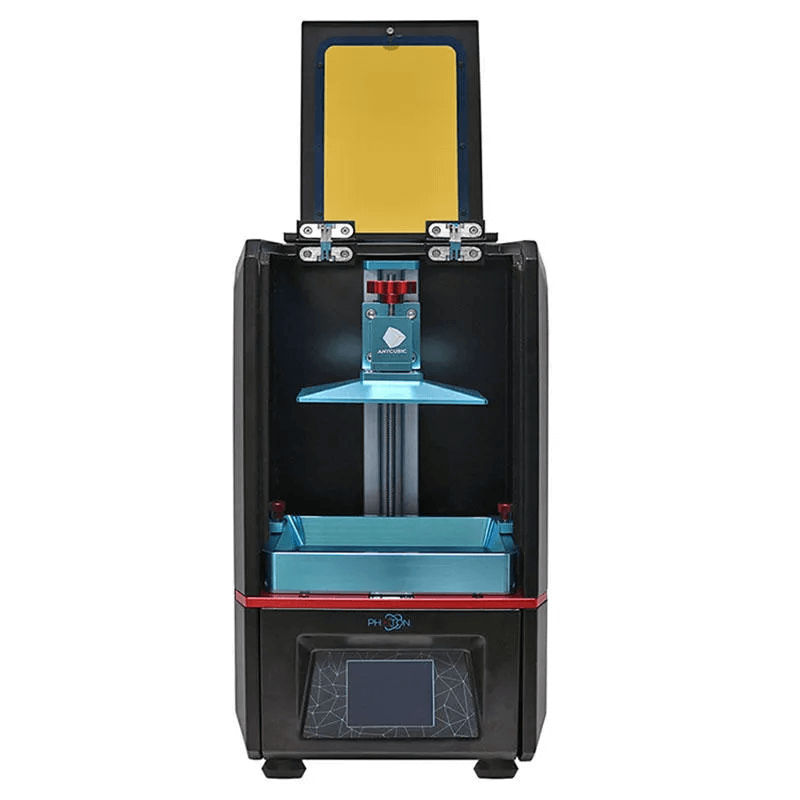Compare Ender 5 vs Photon
Comparison between the best 3D printers
Choose the best 3D printer at the best price. The cheapest 3D printers are here.
Buy a 3D printer here with 3D Fila.
 |
 |
|
| Model | Ender 5[BUY Ender 5] |
Photon |
| Printing Material | Filament | Resin |
| Buy Filament for Creality 3D Ender 5 | Buy Resin forAnycubic Photon | |
| Estimated price | $399,00 | $100,00 |
| Manufacturer | Creality 3D | Anycubic |
| Release Year | 2020 | 2019 |
| Print Volume [mm] | 220x220x300 | 65x115x155 |
| Printer Size [mm] | 485x510x552 | 220x200x400 |
| Weight [kg] | 11,8 | 7,2 |
| Power Loss Recovery | YES | NO |
| Maximum Resolution [mm] | 0,1 | |
| Processor | 32 bits | |
| Display | Mono | Touchscreen TFT 3,5'' |
| Power Supply | 24V / 360W | 40W |
| Connectivity | SD / USB | USB |
| Operating systems | Windows, Mac, Linux | Windows, Mac, Linux |
| Date of registration in the system | 2021-04-15 | 2021-04-15 |
| Release date | 2020 | 2019 |
| Extra features | Crealitys Ender 5 stands out with a solid frame and a larger 220 x 220 x 300mm print volume. Its assembly is simple and quick, offering high print quality and speeds of up to 80mm/s. With a magnetic bed, it makes it easy to remove prints. Notable for being hackable and expandable, the Ender 5 continues Crealitys innovative tradition in the affordable 3D printer market. Equipped with a 350W/24V Meanwell power supply, it heats up quickly, in addition to having efficient cable management and modified Marlin firmware. Its unique design includes dedicated stepper motors for each axis and smooth movement on the Y axis, providing more consistent and detailed prints. | The Anycubic Photon DLP is a resin 3D printer that stands out for its affordability and quality. It uses DLP (Digital Light Processing) technology to cure resin layers with precision, offering resolution of 25-100 microns. Its build volume is 115 x 65 x 155 mm, suitable for modest-sized projects. It includes a 2.8-inch touchscreen, USB and SD card connectivity, and a carbon filter to mitigate odors. It is notable for generating efficient support structures through its custom slicing software. Although it requires care in resin handling and post-processing, it is an excellent option for beginners and professionals who want to explore resin 3D printing with high resolution and ease of use. |
| Support for multiple colors and materials (AMS and CFS) | NO | NO |
Notes * |
||
| Cost-benefit | 7 / 10 | 6 / 10 |
| Hardware | 1.5 / 10 | 0 / 10 |
| Tela | . | . |
| Print volume | 3 / 10 | 3 / 10 |
| Performance | 1 / 10 | 0 / 10 |
| [BUY Ender 5] |
Conclusion |
| In comparing the Creality 3D Ender 5 and the Anycubic Photon, it's evident that both printers cater to different needs within the 3D printing market. The Ender 5, with its larger print volume and robust build, is ideal for users seeking versatility and the capability to handle larger projects. It excels in print quality, speed, and features, making it a well-rounded choice for both beginners and experienced users. Additionally, its power loss recovery feature and hackable design add to its appeal for those interested in customization and reliable operation. On the other hand, the Photon stands out as an affordable entry point into the world of resin printing. With its high resolution and compact size, it's great for users focused on detailed, smaller-scale projects. While it lacks some features seen in the Ender 5, such as power loss recovery and a larger build volume, it offers an excellent balance of quality and ease of use, particularly for those venturing into resin printing for the first time. Ultimately, the best choice depends on the user's specific requirements: if larger prints and versatility are essential, the Ender 5 is the superior option. However, for those prioritizing fine detail and a lower price point for smaller projects, the Photon presents a compelling value. Both printers have their strengths and serve distinct purposes in the realm of 3D printing. |

